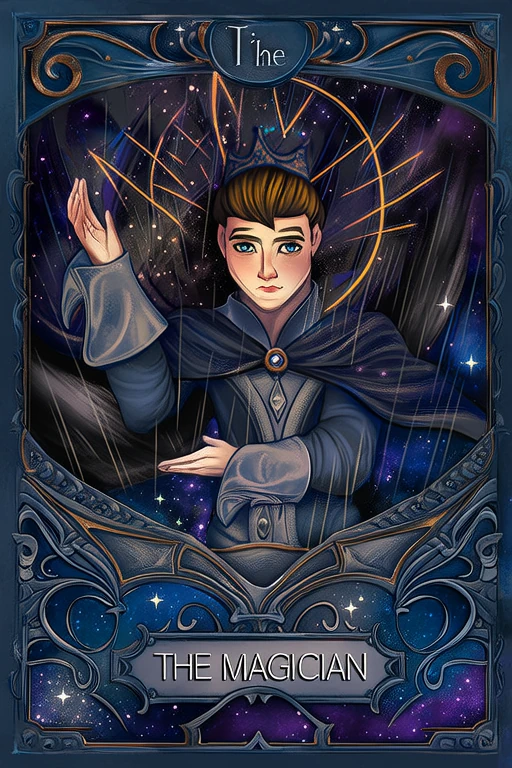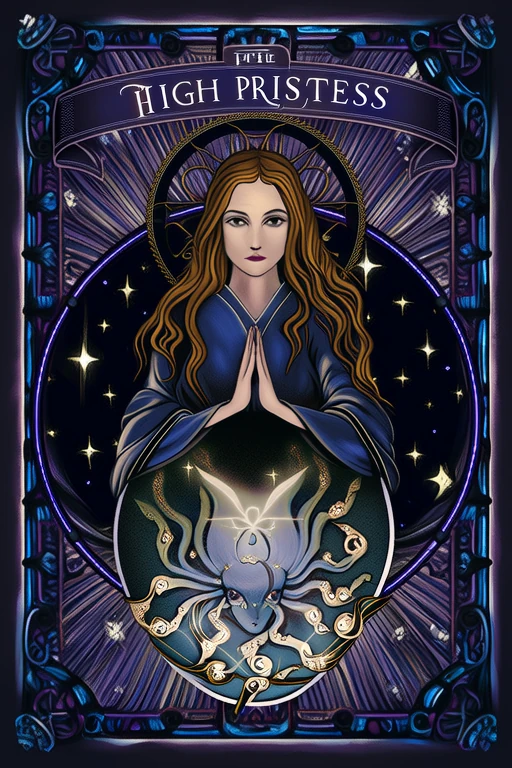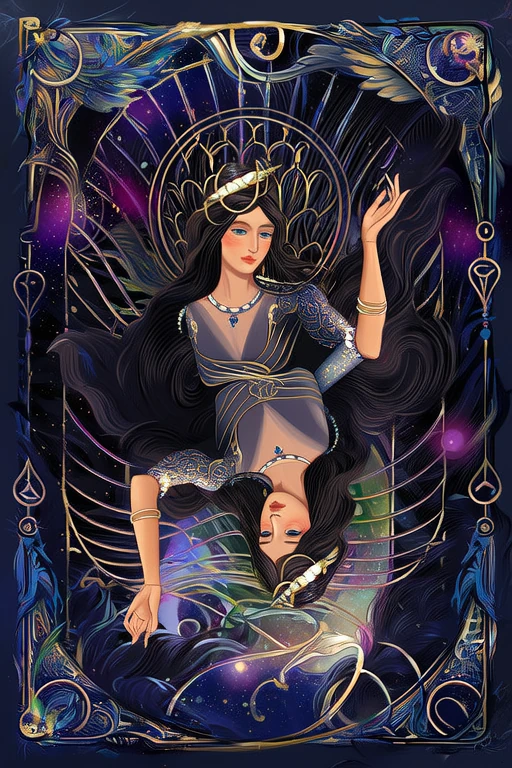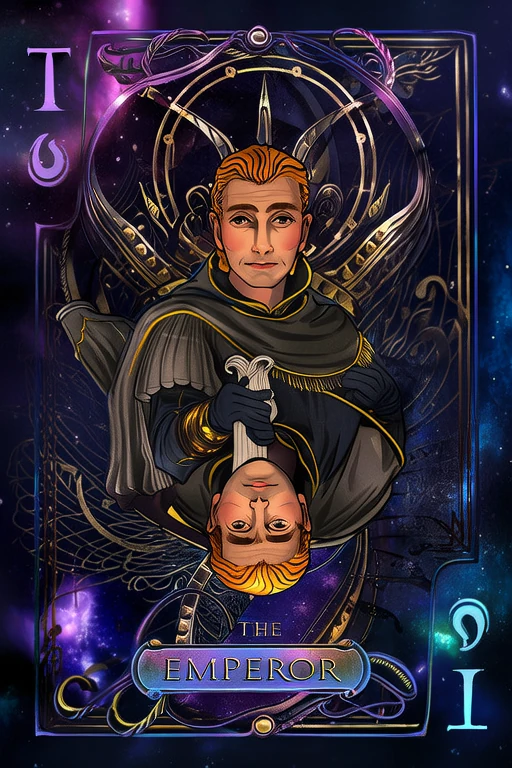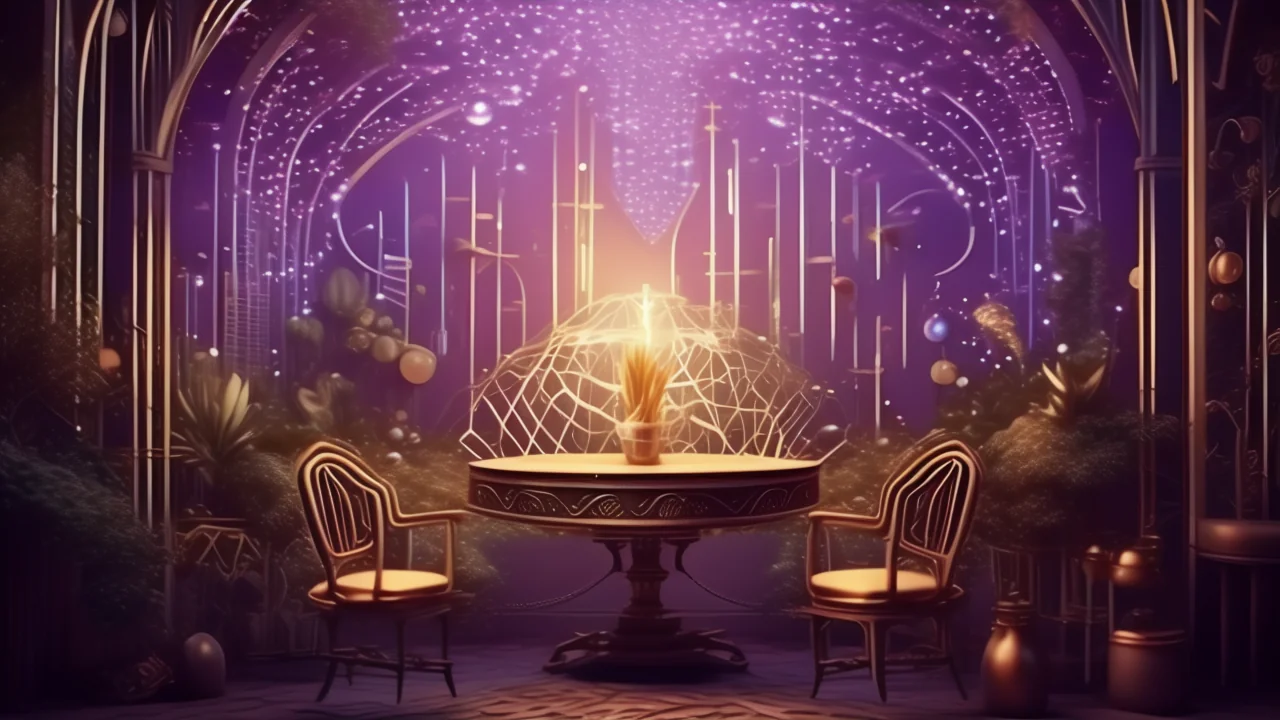
The Fool
Discover the deep meaning of The Fool with our free AI-powered tarot interpretation. Get instant, accurate readings based on advanced tarot knowledge.
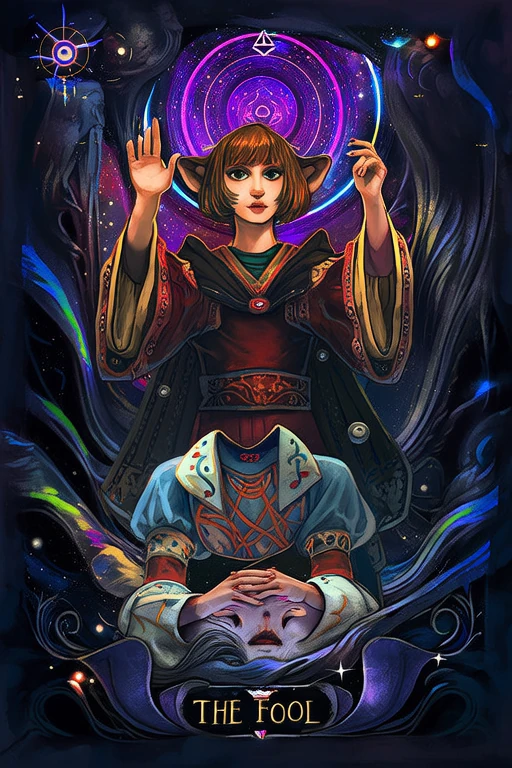
Keywords
Upright Meaning
New beginnings, innocence, spontaneity, free spirit
Reversed Meaning
Holding back, recklessness, risk-taking
Full Interpretation
The Fool represents new beginnings, innocence, and spontaneity. It suggests taking a leap of faith and embracing new opportunities.
In-Depth Analysis
📜 Historical Background
The Fool, numbered as 0 in the Major Arcana of the tarot deck, is one of the most enigmatic and symbolically rich cards in the tarot. Its origins trace back to early 15th-century Europe, particularly in Italy and France, where tarot was first used not for divination, but as a card game known as Tarocchi or Tarot. The Fool in these early decks was often referred to as 'Il Matto' in Italian or 'Le Mat' in French, signifying a jester or madman—a figure outside societal norms, free from rules and expectations.
Historically, The Fool was associated with the archetype of the holy fool or the court jester, a figure who, despite appearing foolish, often spoke truths that others dared not utter. In medieval and Renaissance Europe, jesters were valued for their wit and insight, often serving as confidants to royalty. This duality—of being both naïve and wise—has become central to The Fool’s symbolic identity.
Over time, the imagery of The Fool evolved. In the Visconti-Sforza tarot, one of the oldest surviving decks, The Fool is depicted as a ragged man with a jester’s cap, holding a staff with a small animal or bird attached to it. He often appears on the verge of falling off a cliff, symbolizing his lack of caution and his blind trust in the journey ahead.
In the 19th century, with the rise of occultism and esoteric tarot, the meaning of The Fool began to shift. The Hermetic Order of the Golden Dawn and later, A.E. Waite and Pamela Colman Smith, imbued the card with deeper spiritual significance. In the Rider-Waite-Smith deck, which became the foundation for most modern tarot, The Fool is shown as a young man stepping off a cliff with a small dog nipping at his heels. He carries a bag slung over a staff, symbolizing the burdens and lessons of life, and looks upward, signifying spiritual trust and innocence.
Across cultures, The Fool has taken on various meanings. In French tradition, it is often seen as a symbol of fate or chance, while in German decks, it is sometimes omitted or replaced by other figures. In modern interpretations, especially in New Age and Jungian psychology, The Fool represents the beginning of a spiritual journey, embodying the archetype of the Innocent or the Seeker.
Today, The Fool is celebrated not only in divination but also in popular culture, appearing in literature, film, and music as a symbol of freedom, spontaneity, and the courage to embrace the unknown. Whether seen as a trickster, a sage, or a soul embarking on a journey, The Fool remains a powerful and enduring figure in the tarot tradition.
Symbolism & Imagery
The Fool is rich in symbolism, with each element in its imagery contributing to a deeper understanding of its meaning. In the Rider-Waite-Smith deck, the card depicts a young man standing at the edge of a cliff, dressed in colorful, patchwork clothing that represents his individuality and detachment from societal norms. His white rose, a symbol of purity and innocence, suggests a heart untainted by worldly corruption. The dog tugging at his leg may represent loyalty, instinct, or even a warning of potential danger.
He carries a bag on a stick, symbolizing the material and emotional baggage he brings on his journey. The sun shining overhead indicates divine guidance and optimism, while the cliff edge signifies the leap of faith he is about to take. The Fool’s gaze is directed upward, implying trust in the universe and a spiritual outlook rather than a concern for earthly matters.
Color plays a crucial role in interpreting The Fool. The vibrant hues of his clothing reflect vitality, creativity, and a free spirit. White symbolizes purity and spiritual awareness, while red represents passion and energy. The blue of the sky suggests clarity and higher consciousness.
Numerologically, The Fool is numbered '0', a unique placement in the Major Arcana. This number signifies both nothingness and infinite potential, reinforcing the idea of beginning anew and embracing the unknown. It also aligns with the concept of the 'wild card' in some traditions—unpredictable yet full of possibility.
In different cultural contexts, interpretations of The Fool vary. In traditional European decks, it is often associated with chaos or misfortune. However, in modern tarot, especially in Western esoteric traditions, The Fool is viewed as a positive card representing new beginnings, adventure, and spiritual awakening.
When upright, The Fool signifies taking a leap of faith, embracing spontaneity, and trusting in the journey ahead. It encourages a sense of freedom and the courage to pursue one’s dreams. Reversed, it may indicate recklessness, naivety, or a lack of direction. It can warn against impulsive decisions or suggest that one is not yet prepared for the path ahead.
The Fool also connects deeply with other cards in the Major Arcana. It is often seen as the starting point of the Fool’s Journey, a metaphorical path through the other Major Arcana cards, culminating in The World, which represents completion and fulfillment. The Fool shares thematic links with The Magician (card 1), symbolizing the transition from potential to action, and with The Hanged Man, representing surrender and a different perspective.
Ultimately, The Fool is a card of beginnings, of innocence, and of the infinite possibilities that lie ahead. It reminds us that sometimes, to find wisdom, one must first embrace the unknown.
Psychological Insights
From a psychological perspective, The Fool resonates deeply with Carl Jung’s concept of archetypes—universal symbols embedded in the collective unconscious. The Fool embodies the archetype of the Innocent, the Seeker, and sometimes the Trickster. As the Innocent, it represents purity, optimism, and the belief in a benevolent universe. As the Seeker, it symbolizes the start of a transformative journey, driven by curiosity and a desire for growth. And as the Trickster, it reflects the ability to challenge norms, question assumptions, and embrace chaos as a catalyst for change.
In modern life, The Fool offers valuable guidance for decision-making and personal growth. It encourages individuals to take calculated risks, follow their intuition, and remain open to new experiences. Whether starting a new career, embarking on a journey, or making a life-changing decision, The Fool reminds us that uncertainty is not something to fear, but rather a necessary part of growth. It teaches the importance of maintaining a childlike wonder and the courage to step into the unknown.
For self-awareness and emotional intelligence, The Fool serves as a mirror, reflecting our relationship with control and trust. It challenges us to examine whether we are holding ourselves back due to fear or overthinking. In therapeutic settings, The Fool can be used to explore themes of autonomy, spontaneity, and the balance between freedom and responsibility. Counselors and coaches may use this card to help clients embrace change, release limiting beliefs, and reconnect with their authentic selves.
Spiritually, The Fool plays a significant role in modern esoteric and mindfulness practices. It is often associated with the energy of new beginnings, inner child healing, and soul-centered living. Meditating on The Fool can inspire a sense of liberation and encourage practitioners to let go of past burdens. It is also a powerful symbol in shadow work, where it invites individuals to confront their fears of failure, rejection, or the unknown.
In tarot readings, The Fool frequently appears when a person is on the brink of a major life transition. It encourages them to trust the process, even when the outcome is unclear. By embracing the energy of The Fool, individuals can cultivate resilience, creativity, and an openness to life’s mysteries. Ultimately, The Fool teaches that the journey itself is the destination, and that true wisdom often begins with a single, fearless step.
Correspondences
The Fool is associated with the planet Uranus in modern astrology, reflecting its themes of unpredictability, innovation, and sudden change. Uranus governs the unexpected and the revolutionary, aligning perfectly with The Fool’s essence of spontaneity and breaking free from convention. In some esoteric traditions, it is also linked to Neptune, the planet of dreams, illusions, and spiritual transcendence.
Astrologically, The Fool corresponds to the zodiac sign Aquarius, known for its independent, unconventional, and forward-thinking nature. Like Aquarius, The Fool embraces the new, the uncharted, and the unorthodox. This connection reinforces the card’s message of breaking free from societal norms and embracing one’s unique path.
Crystals and gemstones that resonate with The Fool include amethyst, which enhances spiritual awareness and intuition; clear quartz, known as the master healer and amplifier of energy; and selenite, which promotes clarity and connection to higher realms. These stones can be used during meditation or placed on an altar to enhance The Fool’s energies of new beginnings and spiritual insight.
Herbs and essential oils associated with The Fool include lavender for clarity and spiritual protection, sage for purification and releasing the old, and frankincense for spiritual elevation and meditation. These can be used in rituals, baths, or diffusers to align with the card’s energy.
Elementally, The Fool is connected to Air, representing intellect, freedom, and movement. It also carries qualities of Aether or Spirit, symbolizing the unseen forces that guide us. In terms of seasons, The Fool aligns with Spring—a time of renewal, growth, and fresh beginnings. Temporally, it corresponds with dawn, the moment of new light and infinite possibility.
Energetically, The Fool is linked to the Crown Chakra, the center of spiritual connection, enlightenment, and divine guidance. Balancing this chakra can help individuals align with The Fool’s energy of trust, higher purpose, and cosmic awareness.
Numerologically, The Fool is represented by the number 0, symbolizing both emptiness and infinite potential. It reflects the idea of returning to the source, embracing the unknown, and recognizing that all possibilities exist before a journey begins. This number reinforces The Fool’s role as the beginning of the Major Arcana and the soul’s spiritual journey.
❓ Frequently Asked Questions
What does The Fool mean in a love reading? In a love context, The Fool often indicates the beginning of a new relationship or a fresh perspective on an existing one. Upright, it suggests excitement, spontaneity, and a willingness to take emotional risks. Reversed, it may warn of recklessness, immaturity, or entering a relationship without proper awareness.
Is The Fool a positive or negative card? The Fool is generally considered a positive card when upright, symbolizing new beginnings, freedom, and spiritual trust. However, when reversed, it can indicate naivety, impulsiveness, or a lack of preparation. Its meaning largely depends on the surrounding cards and the context of the reading.
Does The Fool mean yes or no in a yes/no question? In a yes/no reading, The Fool typically leans toward 'yes,' especially when the question involves starting something new, taking a risk, or embracing change. However, it may also suggest that the situation is still unfolding and the answer isn’t fully clear yet.
What is a common misconception about The Fool? Many beginners assume that The Fool is a negative or chaotic card due to its association with madness or foolishness. However, in modern tarot, it is more accurately seen as a symbol of potential, innocence, and the courage to embrace the unknown.
How do professionals read The Fool in spreads? Experienced readers often interpret The Fool as a sign of new beginnings, transitions, or opportunities. In a three-card spread, it may represent the past (a previous leap of faith), the present (a current opportunity), or the future (an upcoming change). In more complex spreads like the Celtic Cross, its position and surrounding cards provide deeper insight into the nature of the journey or decision at hand.
How does The Fool interact with other cards? When paired with The Magician, it emphasizes the power of potential turning into action. With The Hanged Man, it suggests surrender and a new perspective. With The Tower, it may indicate a sudden upheaval or unexpected change. When near The World, it shows the completion of a cycle and the readiness for a new adventure.
What practical advice should readers consider when interpreting The Fool? Always consider the context of the question and the surrounding cards. The Fool is not a card of recklessness but of informed risk-taking and trusting the journey. Encourage clients to embrace uncertainty, follow their intuition, and remain open to new possibilities. Whether upright or reversed, The Fool invites a deeper reflection on how one approaches change and personal growth.
